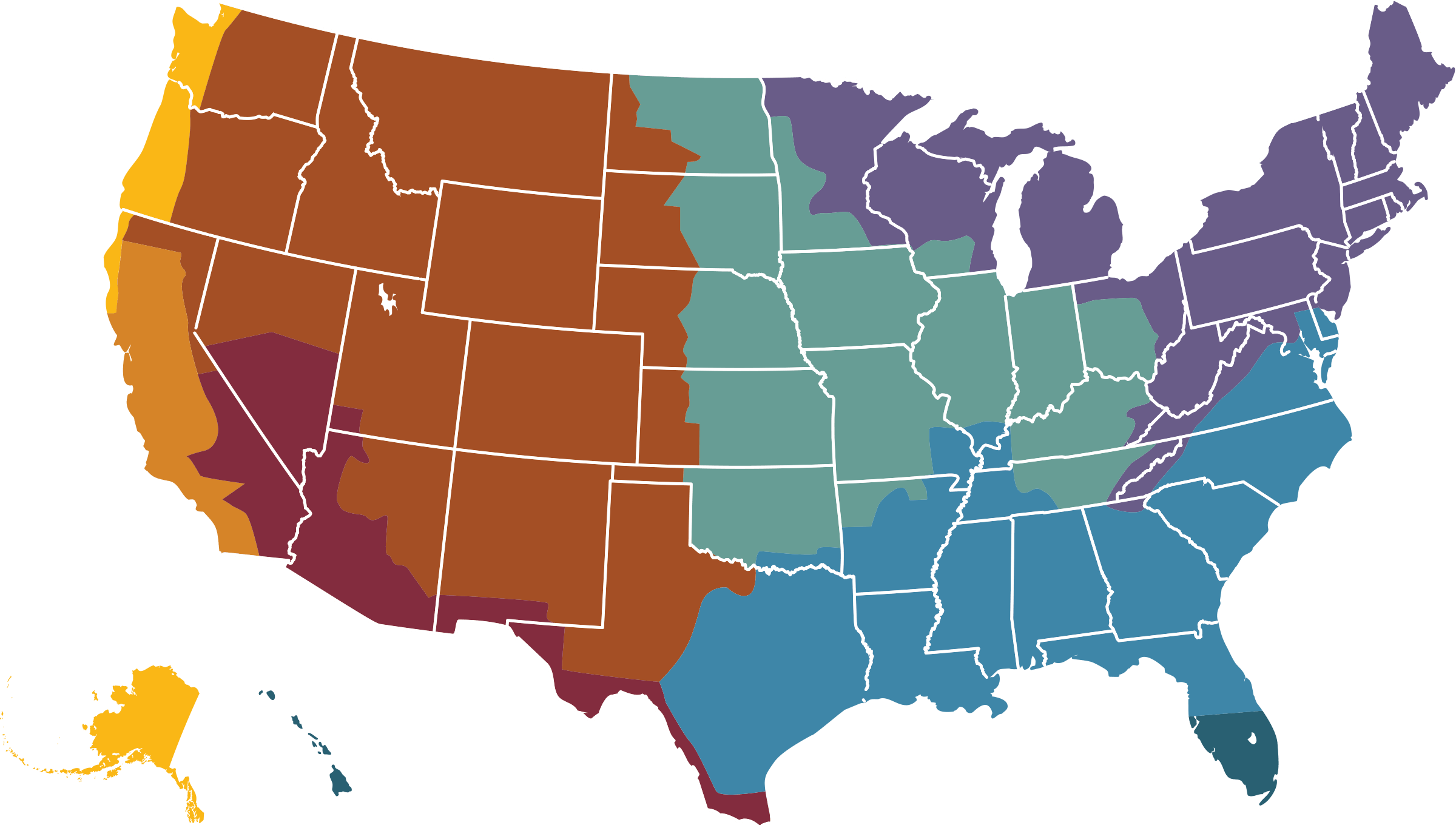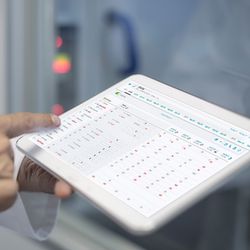IDEXX Reference Laboratories
DISCOVER MORE
IDEXX allergen panels
Serum allergy testing with a simple blood test is a convenient and accurate method to determine environmental allergens.
Once a patient’s specific environmental allergens have been identified, then immunotherapy can be used to hyposensitize the pet. Currently, immunotherapy is the only available therapy that has the potential to change the long-term course of the disease by reducing symptoms and drug dependency, and immunotherapy should be offered to clients whenever feasible.
Allergen testing options
For most atopic patients, ordering the standard regional allergen panel of environmental allergens is indicated. Additional panels that are less commonly indicated but can either be ordered alone or in combination with the standard regional allergen panel include an Insect Panel, Farm & Stable Panel, Food Panel, and Malassezia Allergen Add-on.
Regional Allergen Panels
The Regional Allergen Panels test for IgE against 36 core environmental allergens common to all regions and 12 additional geographically specific allergens.
Refer to the map below to determine your region, and then click on the region name below the map to access regional allergen test codes and a list of specific allergens included in each regional panel. Patients who live near the border of a region may benefit from the addition of a Secondary Regional Allergen Panel.
Additional allergen panels
| 3291—Insect Allergen Panel Includes IgE for common household and biting insects. |
|
3292—Farm & Stable Allergen Panel Includes IgE for common farm allergens, including cat dander, grain dusts and smuts, molds, and pollens. |
|
3293—Food Allergen Panel Includes IgE for common pet food components. Immunotherapy is not available for food allergens. A strict hypoallergenic dietary trial is recommended to appropriately diagnose food sensitivity/allergy. |
|
3299—Malassezia Allergen Add-on Available if sensitivity to this yeast is clinically suspected. |
Recommended timing for serum allergy testing
A specific time for when to test has not been determined since many intrinsic factors can affect allergy testing. However, many dermatologists recommend testing late in the allergy season and/or within 1 month after seasonal allergy symptoms are lessening. The ideal goal is to allergy test the pet after the pet has been exposed to every pollen and dust allergen for that season. For example, in cold weather areas, this means allergy testing should be done in later summer to fall just after pollination cycles are complete. However, these principles are partially theoretical and will vary with climate and the individual pet.
Impact of medications on serum allergy testing
Antihistamine and cyclosporine therapies do not interfere with serum allergy testing.
Although serum allergy testing appears to be less influenced by glucocorticoid therapy, in cases where it is medically feasible, it may be ideal for glucocorticoid therapy to be discontinued for at least 4–12 weeks prior to serum allergy testing or reduced to the lowest possible every other day dosing. However, mandatory discontinuation of steroids is not required.
A small study suggests that a short course (2 weeks) of Apoquel likely does not interfere with serum allergy testing. Studies looking at the effects of longer-term use of Apoquel are not yet available. It may be ideal to consider discontinuation of Apoquel for at least 4–12 weeks prior to testing if an animal has been on this medication long-term.
Regional panels
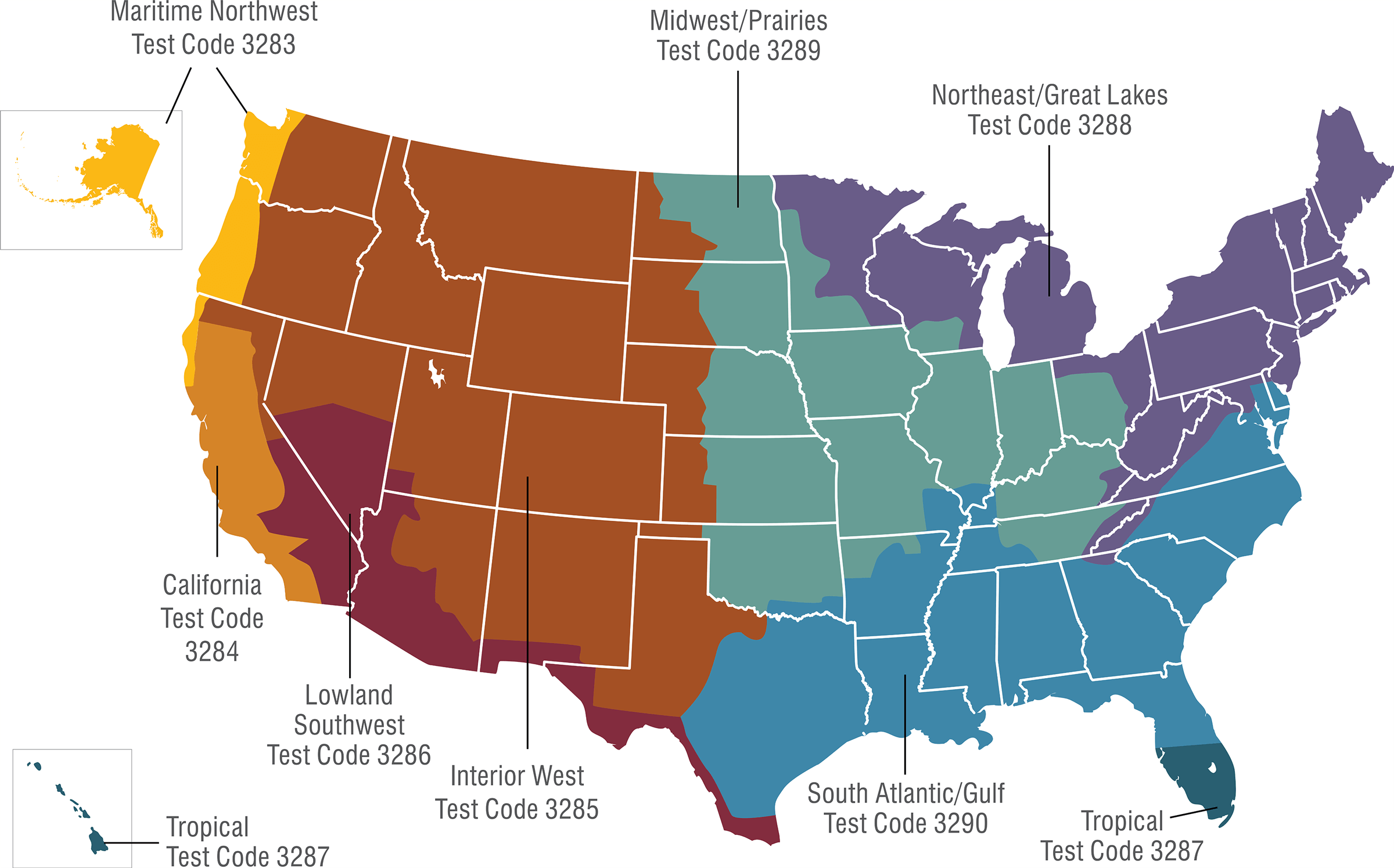
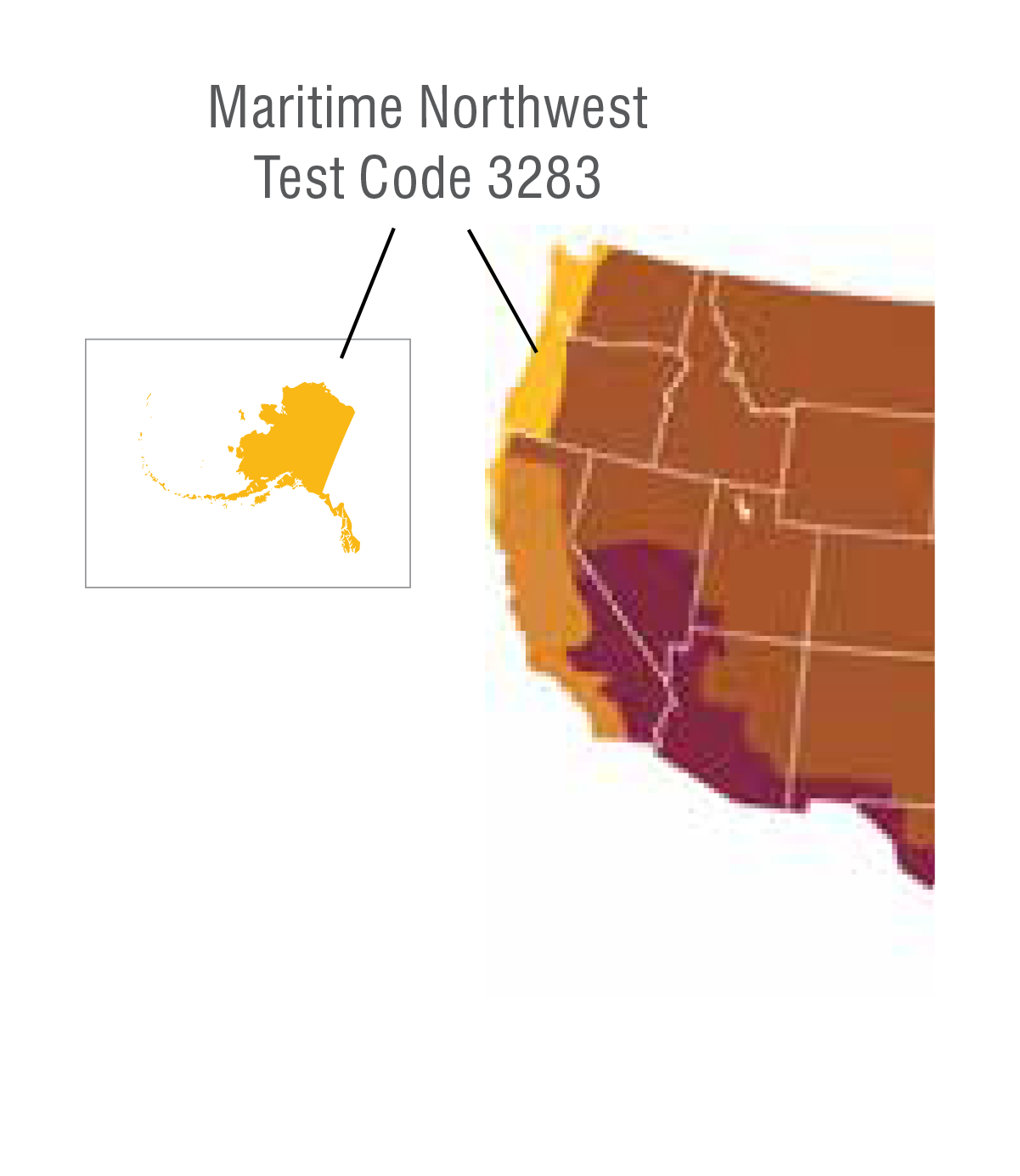
|
Regional Allergen
Panel |
Secondary Regional
Allergen Panel Add-on |
Regional with
Insect |
Regional with
Food |
Regional with
Food and Insect |
Regional with
Farm & Stable |
Regional with
Food, Insect, and Farm & Stable |
Regional with
Farm & Stable and Insect |
Equine Comprehensive
Regional |
|---|---|---|---|---|---|---|---|---|---|
| Test code | 3283 | 32831 | 32832 | 32833 | 32834 | 32835 | 32836 | 32837 | 3301 |
| Serum required* | 2 mL | 1 mL | 3 mL | 3 mL | 4 mL | 3 mL | 5 mL | 4 mL | 5 mL |
| Maritime Northwest environmental allergens | |||||||||
| 36 Common allergens | • | • | • | • | • | • | • | • | |
| 12 Region-specific allergens | • | • | • | • | • | • | • | • | • |
| Additional allergens | |||||||||
| Farm & Stable Panel | • | • | • | • | |||||
| Food Panel | • | • | • | ||||||
| Insect Panel | • | • | • | • | • | ||||
For most atopic patients, ordering the Regional Allergen Panel is indicated. This panel tests for IgE against 36 core environmental allergens common to all regions and 12 additional allergens specific to your region. These 48 allergens include pollens (from weeds, trees, and grasses), molds, and mites (including storage mites often found in pet food). If the patient lives near the border of a region, an Add-on Secondary Regional Allergen Panel from the neighboring region may also be indicated.
Additional panels that are less commonly indicated, but can be ordered in combination with the Regional Allergen Panel, include the Farm & Stable Panel (for common farm allergens, such as alfalfa, oats, etc.), Food Panel, and Insect Panel (for common household and biting insects).
*Submission of a Pet History Form is recommended. Download form here or call Laboratory Customer Support at 1-888-433-9987.
Maritime Northwest environment allergens
(36 common plus 12 region-specific allergens)
Molds
Alternaria
Aspergillus
Cephalosporium
Cladosporium
Curvularia/Drecshlera
Mucor mix
Penicillium
Pullularia/Aureobasidium
Stemphylium
Grasses
Bermuda grass
Johnsongrass
Kentucky bluegrass/June grass
Meadow fescue
Perennial ryegrass
Quack grass
Redtop
Timothy
Insect
Flea
Mites
Dust mite (Dermatophagoides pteronyssinus)
Dust mite (D. farinae)
Storage mite (Acarus siro)
Storage mite (Tyrophagus)
Trees
Alder, red
Ash mix
Cedar, red (juniper)
Cottonwood
Elm
Maple mix
Mulberry, red
Oak mix
Olive
Pine mix
Walnut, black
White pine
Willow, black
Weeds
Cocklebur
Dandelion
Dock/sorrel mix
English plantain
Goldenrod
Kochia/fire bush
Lamb’s-quarter
Nettle
Pigweed mix
Ragweed mix
Russian thistle
Sage mix
Scale mix
Note: Region-specific allergens are noted in bold font.
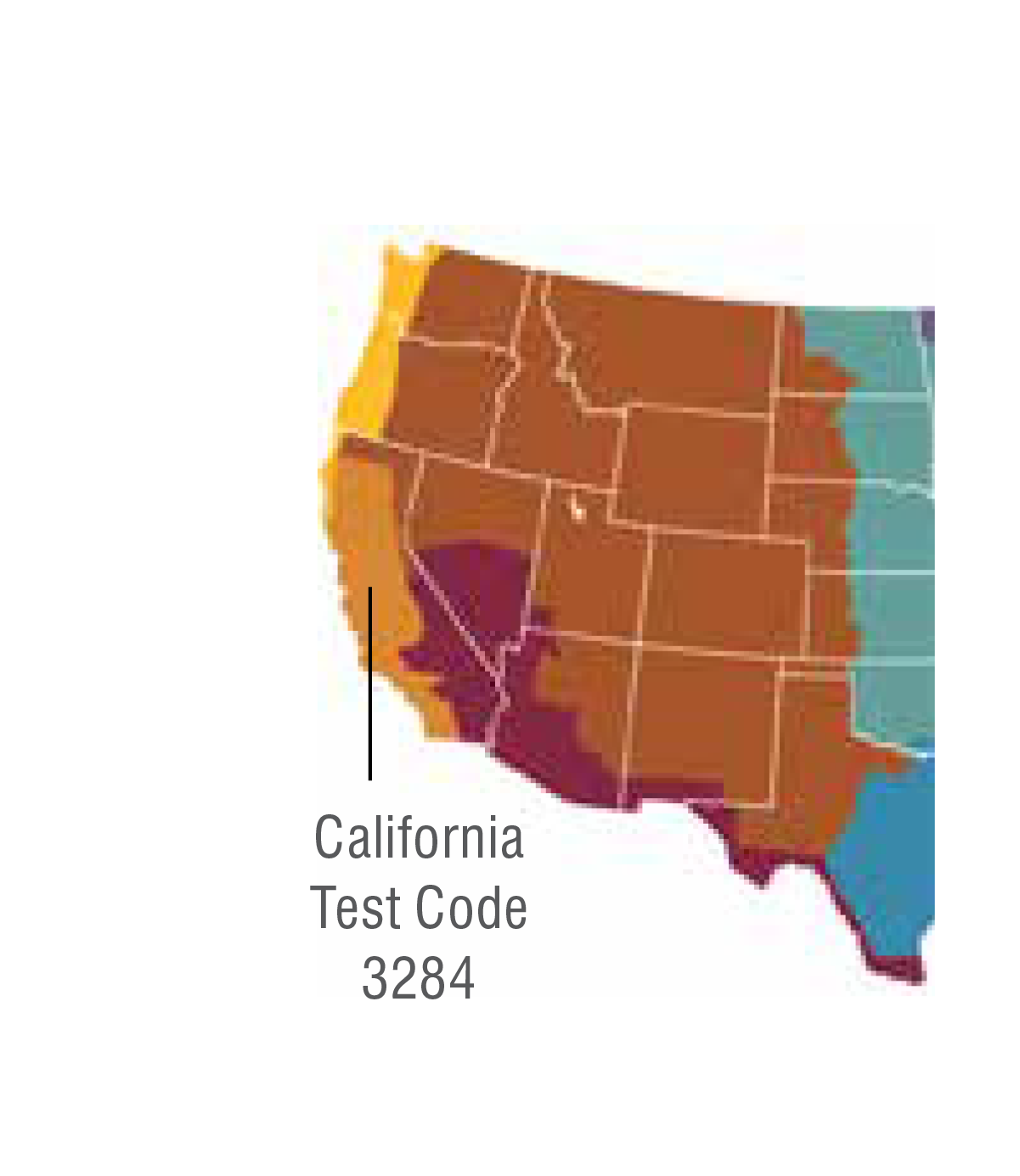
|
Regional Allergen
Panel |
Secondary Regional
Allergen Panel Add-on |
Regional with
Insect |
Regional with
Food |
Regional with
Food and Insect |
Regional with
Farm & Stable |
Regional with
Food, Insect, and Farm & Stable |
Regional with
Farm & Stable and Insect |
Equine Comprehensive
Regional |
|---|---|---|---|---|---|---|---|---|---|
| Test code | 3284 | 32841 | 32842 | 32843 | 32844 | 32845 | 32846 | 32847 | 3302 |
| Serum required* | 2 mL | 1 mL | 3 mL | 3 mL | 4 mL | 3 mL | 5 mL | 4 mL | 5 mL |
| California environmental allergens | |||||||||
| 36 Common allergens | • | • | • | • | • | • | • | • | |
| 12 Region-specific allergens | • | • | • | • | • | • | • | • | • |
| Additional allergens | |||||||||
| Farm & Stable Panel | • | • | • | • | |||||
| Food Panel | • | • | • | ||||||
| Insect Panel | • | • | • | • | • | ||||
For most atopic patients, ordering the Regional Allergen Panel is indicated. This panel tests for IgE against 36 core environmental allergens common to all regions and 12 additional allergens specific to your region. These 48 allergens include pollens (from weeds, trees, and grasses), molds, and mites (including storage mites often found in pet food). If the patient lives near the border of a region, an Add-on Secondary Regional Allergen Panel from the neighboring region may also be indicated.
Additional panels that are less commonly indicated, but can be ordered in combination with the Regional Allergen Panel, include the Farm & Stable Panel (for common farm allergens, such as alfalfa, oats, etc.), Food Panel, and Insect Panel (for common household and biting insects).
*Submission of a Pet History Form is recommended. Download form here or call Laboratory Customer Support at 1-888-433-9987.
California environment allergens
(36 common plus 12 region-specific allergens)
Molds
Alternaria
Aspergillus
Cephalosporium
Cladosporium
Curvularia/Drecshlera
Mucor mix
Penicillium
Pullularia/Aureobasidium
Stemphylium
Grasses
Bermuda grass
Johnsongrass
Kentucky bluegrass/June grass
Meadow fescue
Perennial ryegrass
Quack grass
Redtop
Timothy
Insect
Flea
Mites
Dust mite (Dermatophagoides pteronyssinus)
Dust mite (D. farinae)
Storage mite (Acarus siro)
Storage mite (Tyrophagus)
Trees
Acacia
Alder, red
Ash mix
Cedar, red (juniper)
Cottonwood
Eucalyptus
Maple mix
Mulberry, red
Oak mix
Olive
Orange
Palm*
Pine mix
Walnut, black
Weeds
Cocklebur
Dandelion
Dock/sorrel mix
English plantain
Goldenrod
Kochia/fire bush
Lamb’s-quarter
Pigweed mix
Ragweed mix
Russian thistle
Sage mix
Scale mix
Note: Region-specific allergens are noted in bold font.
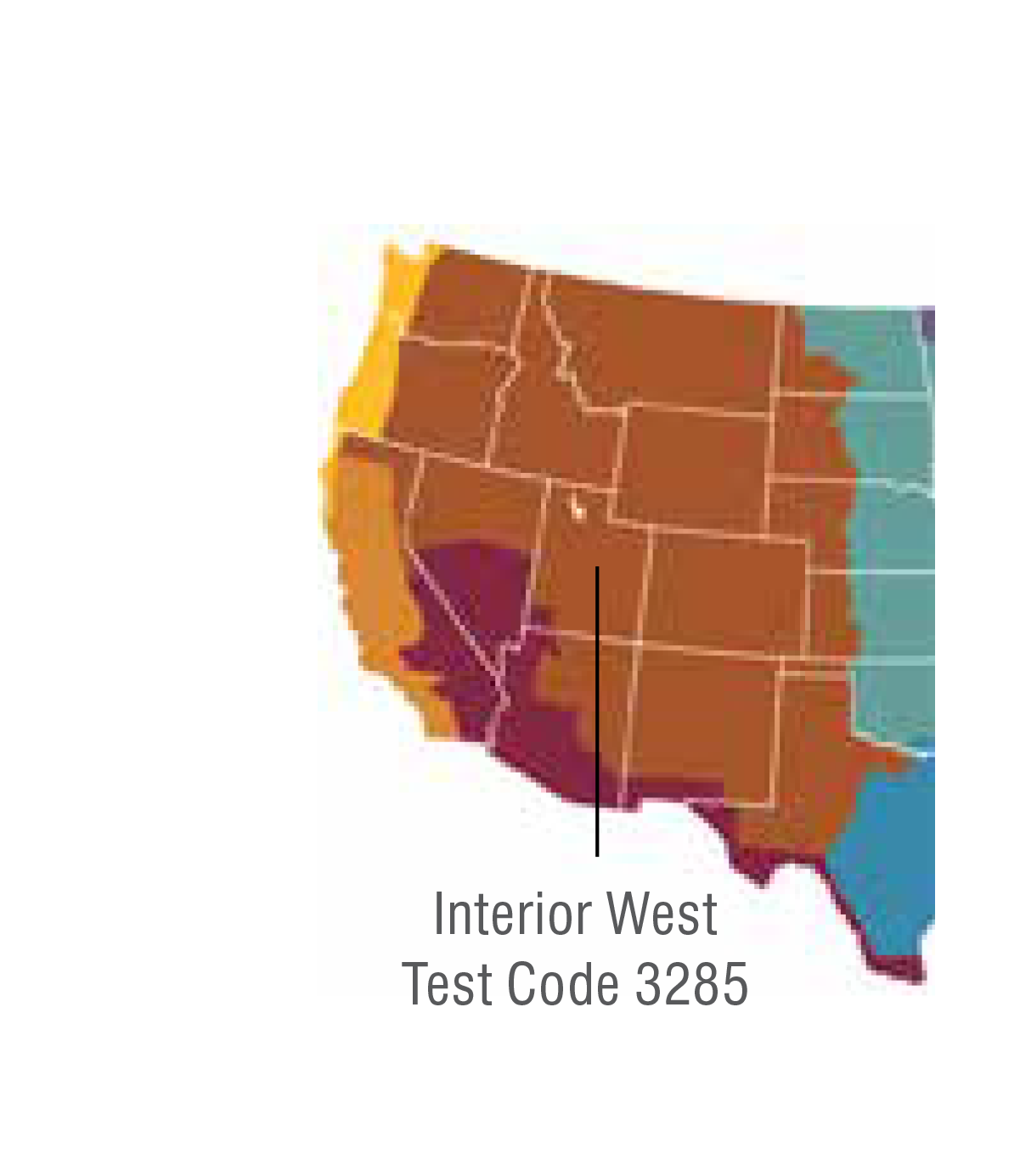
|
Regional Allergen
Panel |
Secondary Regional
Allergen Panel Add-on |
Regional with
Insect |
Regional with
Food |
Regional with
Food and Insect |
Regional with
Farm & Stable |
Regional with
Food, Insect, and Farm & Stable |
Regional with
Farm & Stable and Insect |
Equine Comprehensive
Regional |
|---|---|---|---|---|---|---|---|---|---|
| Test code | 3285 | 32851 | 32852 | 32853 | 32854 | 32855 | 32856 | 32857 | 3303 |
| Serum required* | 2 mL | 1 mL | 3 mL | 3 mL | 4 mL | 3 mL | 5 mL | 4 mL | 5 mL |
| Interior West environmental allergens | |||||||||
| 36 Common allergens | • | • | • | • | • | • | • | • | |
| 12 Region-specific allergens | • | • | • | • | • | • | • | • | • |
| Additional allergens | |||||||||
| Farm & Stable Panel | • | • | • | • | |||||
| Food Panel | • | • | • | ||||||
| Insect Panel | • | • | • | • | • | ||||
For most atopic patients, ordering the Regional Allergen Panel is indicated. This panel tests for IgE against 36 core environmental allergens common to all regions and 12 additional allergens specific to your region. These 48 allergens include pollens (from weeds, trees, and grasses), molds, and mites (including storage mites often found in pet food). If the patient lives near the border of a region, an Add-on Secondary Regional Allergen Panel from the neighboring region may also be indicated.
Additional panels that are less commonly indicated, but can be ordered in combination with the Regional Allergen Panel, include the Farm & Stable Panel (for common farm allergens, such as alfalfa, oats, etc.), Food Panel, and Insect Panel (for common household and biting insects).
*Submission of a Pet History Form is recommended. Download form here or call Laboratory Customer Support at 1-888-433-9987.
Interior West environment allergens
(36 common plus 12 region-specific allergens)
Molds
Alternaria
Aspergillus
Cephalosporium
Cladosporium
Curvularia/Drecshlera
Mucor mix
Penicillium
Pullularia/Aureobasidium
Stemphylium
Grasses
Bermuda grass
Johnsongrass
Kentucky bluegrass/June grass
Meadow fescue
Perennial ryegrass
Quack grass
Redtop
Timothy
Insect
Flea
Mites
Dust mite (Dermatophagoides pteronyssinus)
Dust mite (D. farinae)
Storage mite (Acarus siro)
Storage mite (Tyrophagus)
Trees
Alder, red
Ash mix
Cedar, red (juniper)
Cottonwood
Elm
Hackberry
Maple mix
Mesquite
Mulberry, red
Oak mix
Pine mix
Russian olive
Walnut, black
Weeds
Cocklebur
Dandelion
Dock/sorrel mix
English plantain
Goldenrod
Kochia/fire bush
Lamb’s-quarter
Nettle
Pigweed mix
Ragweed mix
Russian thistle
Sage mix
Scale mix
Note: Region-specific allergens are noted in bold font.
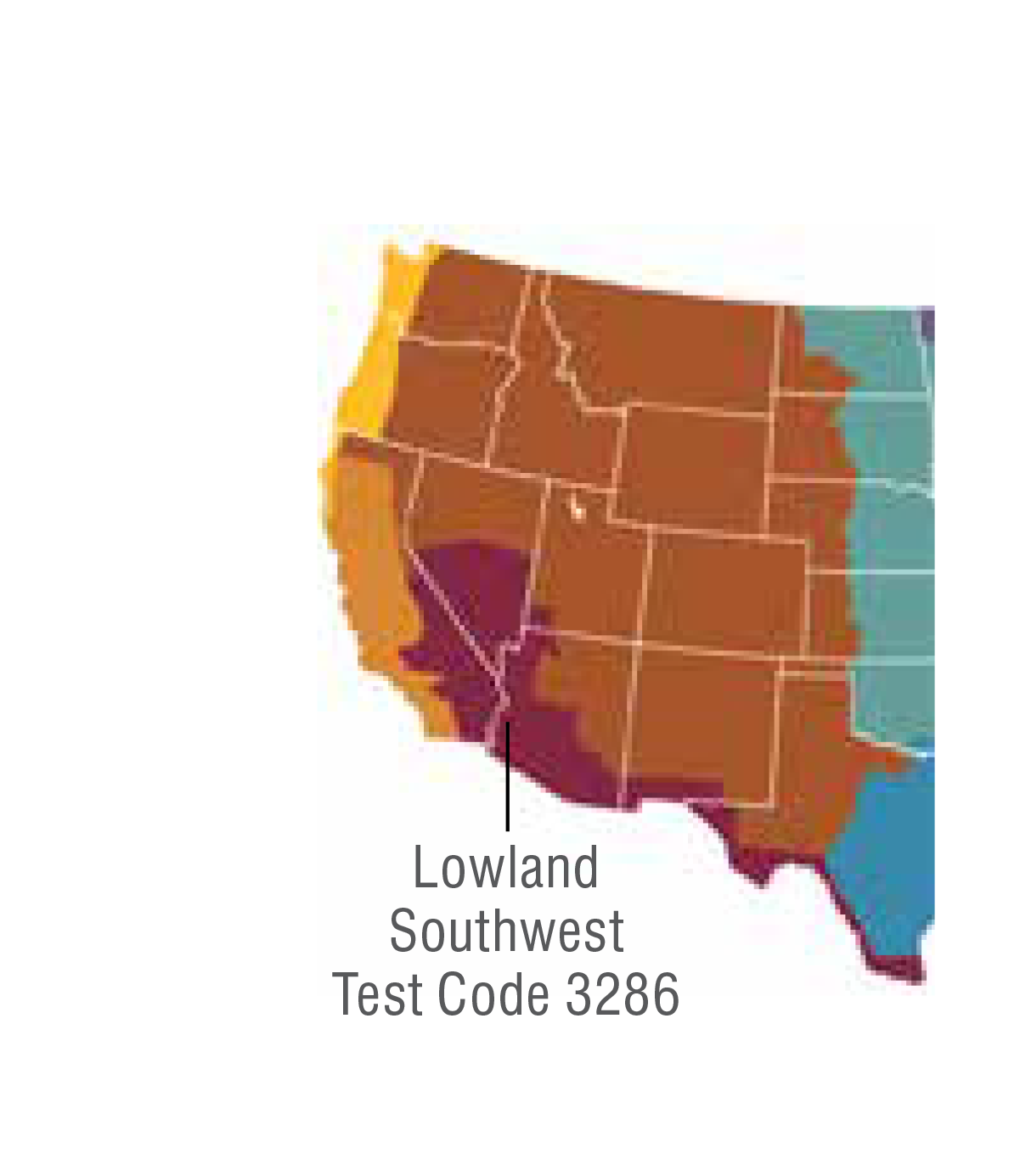
|
Regional Allergen
Panel |
Secondary Regional
Allergen Panel Add-on |
Regional with
Insect |
Regional with
Food |
Regional with
Food and Insect |
Regional with
Farm & Stable |
Regional with
Food, Insect, and Farm & Stable |
Regional with
Farm & Stable and Insect |
Equine Comprehensive
Regional |
|---|---|---|---|---|---|---|---|---|---|
| Test code | 3286 | 32861 | 32862 | 32863 | 32864 | 32865 | 32866 | 32867 | 3304 |
| Serum required* | 2 mL | 1 mL | 3 mL | 3 mL | 4 mL | 3 mL | 5 mL | 4 mL | 5 mL |
| Lowland Southwest environmental allergens | |||||||||
| 36 Common allergens | • | • | • | • | • | • | • | • | |
| 12 Region-specific allergens | • | • | • | • | • | • | • | • | • |
| Additional allergens | |||||||||
| Farm & Stable Panel | • | • | • | • | |||||
| Food Panel | • | • | • | ||||||
| Insect Panel | • | • | • | • | • | ||||
For most atopic patients, ordering the Regional Allergen Panel is indicated. This panel tests for IgE against 36 core environmental allergens common to all regions and 12 additional allergens specific to your region. These 48 allergens include pollens (from weeds, trees, and grasses), molds, and mites (including storage mites often found in pet food). If the patient lives near the border of a region, an Add-on Secondary Regional Allergen Panel from the neighboring region may also be indicated.
Additional panels that are less commonly indicated, but can be ordered in combination with the Regional Allergen Panel, include the Farm & Stable Panel (for common farm allergens, such as alfalfa, oats, etc.), Food Panel, and Insect Panel (for common household and biting insects).
*Submission of a Pet History Form is recommended. Download form here or call Laboratory Customer Support at 1-888-433-9987.
Lowland Southwest environment allergens
(36 common plus 12 region-specific allergens)
Molds
Alternaria
Aspergillus
Cephalosporium
Cladosporium
Curvularia/Drecshlera
Mucor mix
Penicillium
Pullularia/Aureobasidium
Stemphylium
Grasses
Bermuda grass
Johnsongrass
Kentucky bluegrass/June grass
Meadow fescue
Perennial ryegrass
Quack grass
Redtop
Timothy
Insect
Flea
Mites
Dust mite (Dermatophagoides pteronyssinus)
Dust mite (D. farinae)
Storage mite (Acarus siro)
Storage mite (Tyrophagus)
Trees
Acacia
Arizona cypress
Ash mix
Cedar, red (juniper)
Cottonwood
Maple mix
Mesquite
Mulberry, red
Oak mix
Olive
Palm
Pine mix
Sycamore
Walnut, black
Willow, black
Weeds
Cocklebur
Dandelion
Dock/sorrel mix
English plantain
Goldenrod
Lamb’s-quarter
Pigweed mix
Ragweed mix
Russian thistle
Sage mix
Scale mix
Note: Region-specific allergens are noted in bold font.
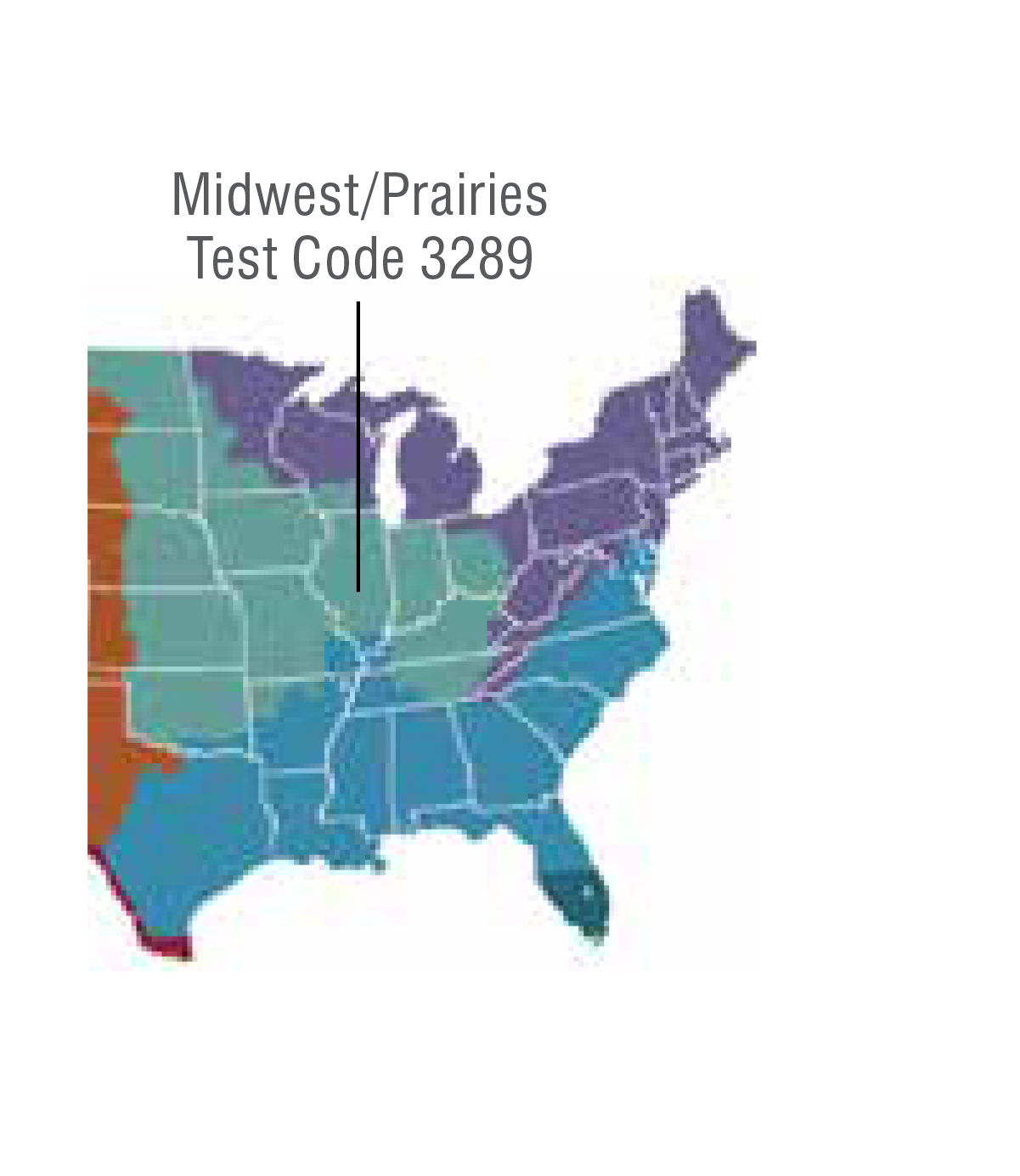
|
Regional Allergen
Panel |
Secondary Regional
Allergen Panel Add-on |
Regional with
Insect |
Regional with
Food |
Regional with
Food and Insect |
Regional with
Farm & Stable |
Regional with
Food, Insect, and Farm & Stable |
Regional with
Farm & Stable and Insect |
Equine Comprehensive
Regional |
|---|---|---|---|---|---|---|---|---|---|
| Test code | 3289 | 32891 | 32892 | 32893 | 32894 | 32895 | 32896 | 32897 | 3307 |
| Serum required* | 2 mL | 1 mL | 3 mL | 3 mL | 4 mL | 3 mL | 5 mL | 4 mL | 5 mL |
| Midwest/Prairies environmental allergens | |||||||||
| 36 Common allergens | • | • | • | • | • | • | • | • | |
| 12 Region-specific allergens | • | • | • | • | • | • | • | • | • |
| Additional allergens | |||||||||
| Farm & Stable Panel | • | • | • | • | |||||
| Food Panel | • | • | • | ||||||
| Insect Panel | • | • | • | • | • | ||||
For most atopic patients, ordering the Regional Allergen Panel is indicated. This panel tests for IgE against 36 core environmental allergens common to all regions and 12 additional allergens specific to your region. These 48 allergens include pollens (from weeds, trees, and grasses), molds, and mites (including storage mites often found in pet food). If the patient lives near the border of a region, an Add-on Secondary Regional Allergen Panel from the neighboring region may also be indicated.
Additional panels that are less commonly indicated, but can be ordered in combination with the Regional Allergen Panel, include the Farm & Stable Panel (for common farm allergens, such as alfalfa, oats, etc.), Food Panel, and Insect Panel (for common household and biting insects).
*Submission of a Pet History Form is recommended. Download form here or call Laboratory Customer Support at 1-888-433-9987.
Midwest/Prairies environment allergens
(36 common plus 12 region-specific allergens)
Molds
Alternaria
Aspergillus
Cephalosporium
Cladosporium
Curvularia/Drecshlera
Mucor mix
Penicillium
Pullularia/Aureobasidium
Stemphylium
Grasses
Bermuda grass
Corn pollen
Johnsongrass
Kentucky bluegrass/June grass
Meadow fescue
Orchard grass
Perennial ryegrass
Quack grass
Redtop
Timothy
Wheat pollen
Insect
Flea
Mites
Dust mite (Dermatophagoides pteronyssinus)
Dust mite (D. farinae)
Storage mite (Acarus siro)
Storage mite (Tyrophagus)
Trees
Ash mix
Birch
Cedar, red (juniper)
Cottonwood
Elm
Hackberry
Hickory/pecan
Maple mix
Mulberry, red
Oak mix
Pine mix
Sycamore, eastern
Willow, black
Weeds
Cocklebur
Dandelion
Dock/sorrel mix
English plantain
Goldenrod
Kochia/fire bush
Lamb’s-quarter
Pigweed mix
Ragweed mix
Sage mix
Note: Region-specific allergens are noted in bold font.
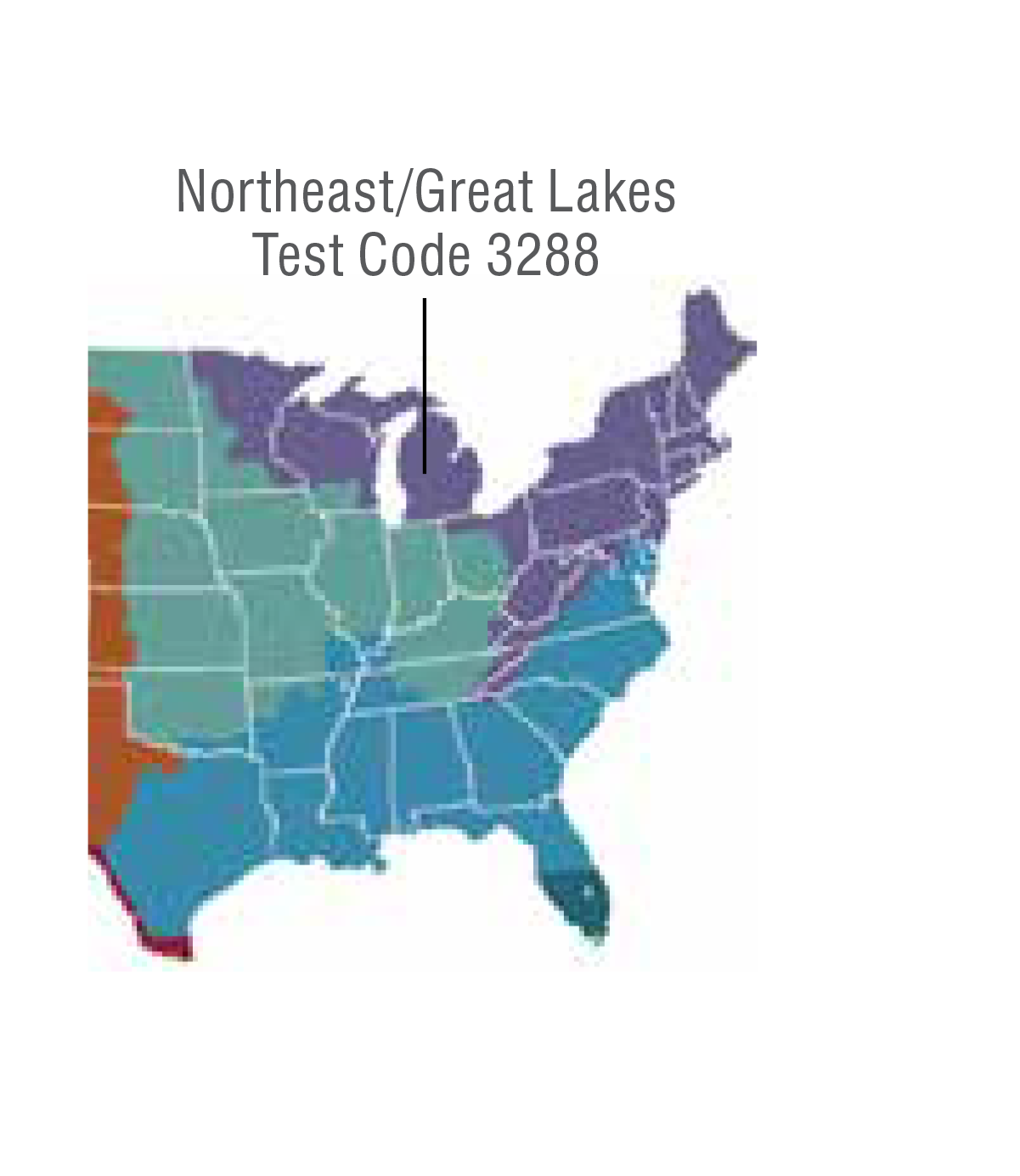
|
Regional Allergen
Panel |
Secondary Regional
Allergen Panel Add-on |
Regional with
Insect |
Regional with
Food |
Regional with
Food and Insect |
Regional with
Farm & Stable |
Regional with
Food, Insect, and Farm & Stable |
Regional with
Farm & Stable and Insect |
Equine Comprehensive
Regional |
|---|---|---|---|---|---|---|---|---|---|
| Test code | 3288 | 32881 | 32882 | 32883 | 32884 | 32885 | 32886 | 32887 | 3306 |
| Serum required* | 2 mL | 1 mL | 3 mL | 3 mL | 4 mL | 3 mL | 5 mL | 4 mL | 5 mL |
| Northeast/Great Lakes environmental allergens | |||||||||
| 36 Common allergens | • | • | • | • | • | • | • | • | |
| 12 Region-specific allergens | • | • | • | • | • | • | • | • | • |
| Additional allergens | |||||||||
| Farm & Stable Panel | • | • | • | • | |||||
| Food Panel | • | • | • | ||||||
| Insect Panel | • | • | • | • | • | ||||
For most atopic patients, ordering the Regional Allergen Panel is indicated. This panel tests for IgE against 36 core environmental allergens common to all regions and 12 additional allergens specific to your region. These 48 allergens include pollens (from weeds, trees, and grasses), molds, and mites (including storage mites often found in pet food). If the patient lives near the border of a region, an Add-on Secondary Regional Allergen Panel from the neighboring region may also be indicated.
Additional panels that are less commonly indicated, but can be ordered in combination with the Regional Allergen Panel, include the Farm & Stable Panel (for common farm allergens, such as alfalfa, oats, etc.), Food Panel, and Insect Panel (for common household and biting insects).
*Submission of a Pet History Form is recommended. Download form here or call Laboratory Customer Support at 1-888-433-9987.
Northeast/Great Lakes environment allergens
(36 common plus 12 region-specific allergens)
Molds
Alternaria
Aspergillus
Cephalosporium
Cladosporium
Curvularia/Drecshlera
Mucor mix
Penicillium
Pullularia/Aureobasidium
Stemphylium
Grasses
Bermuda grass
Johnsongrass
Kentucky bluegrass/June grass
Meadow fescue
Perennial ryegrass
Quack grass
Redtop
Sweet vernal grass
Timothy
Insect
Flea
Mites
Dust mite (Dermatophagoides pteronyssinus)
Dust mite (D. farinae)
Storage mite (Acarus siro)
Storage mite (Tyrophagus)
Trees
Alder, red
Ash mix
Bayberry/wax myrtle
Beech
Birch
Cedar, red (juniper)
Cottonwood
Elm
Hazelnut
Hickory/pecan
Maple mix
Mulberry, red
Oak mix
Pine mix
Sycamore, eastern
Walnut, black
Willow, black
Weeds
Cocklebur
Dandelion
Dock/sorrel mix
English plantain
Goldenrod
Lamb’s-quarter
Pigweed mix
Ragweed mix
Note: Region-specific allergens are noted in bold font.
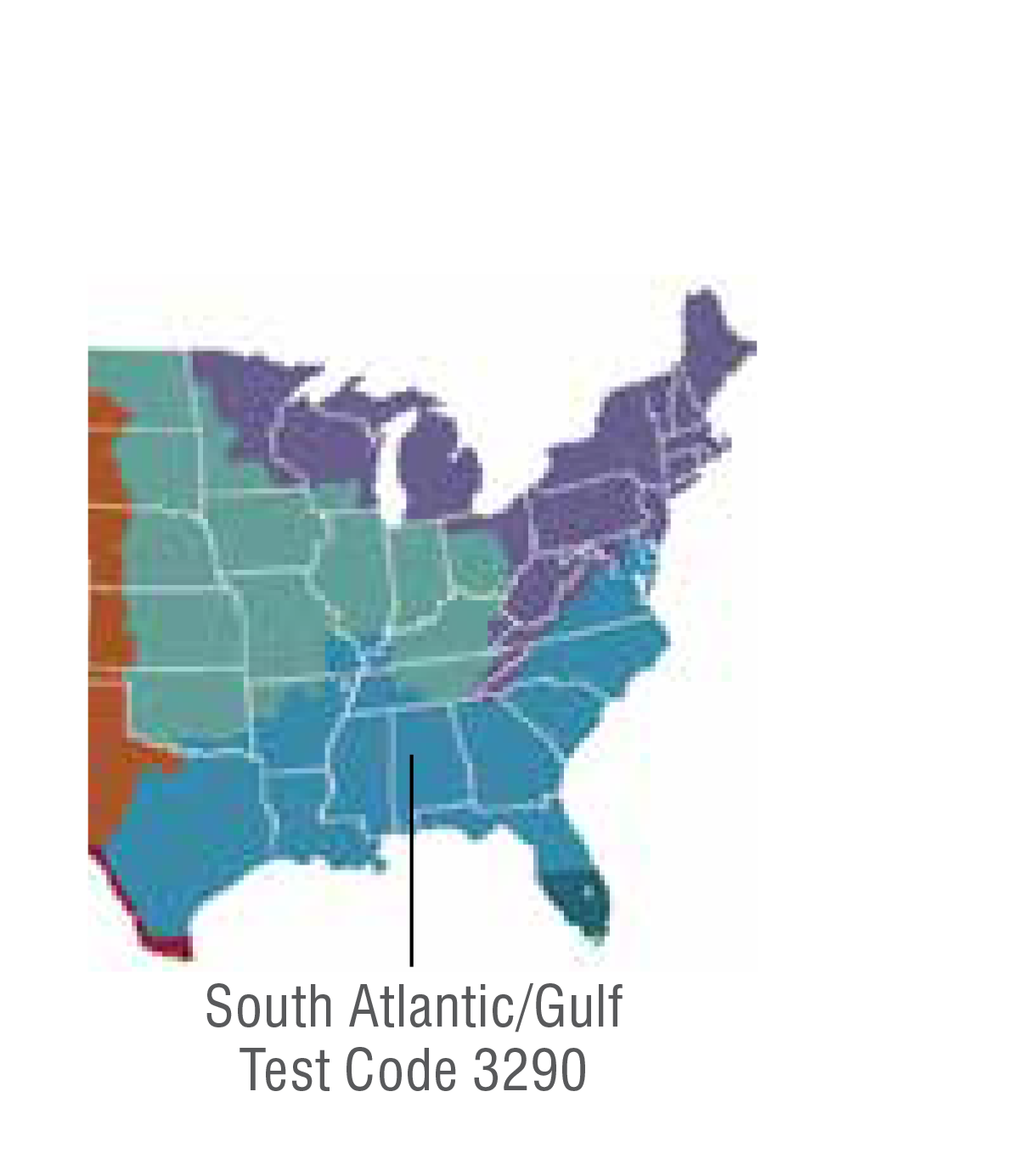
|
Regional Allergen
Panel |
Secondary Regional
Allergen Panel Add-on |
Regional with
Insect |
Regional with
Food |
Regional with
Food and Insect |
Regional with
Farm & Stable |
Regional with
Food, Insect, and Farm & Stable |
Regional with
Farm & Stable and Insect |
Equine Comprehensive
Regional |
|---|---|---|---|---|---|---|---|---|---|
| Test code | 3290 | 32901 | 32902 | 32903 | 32904 | 32905 | 32906 | 32907 | 3308 |
| Serum required* | 2 mL | 1 mL | 3 mL | 3 mL | 4 mL | 3 mL | 5 mL | 4 mL | 5 mL |
| South Atlantic/Gulf environmental allergens | |||||||||
| 36 Common allergens | • | • | • | • | • | • | • | • | |
| 12 Region-specific allergens | • | • | • | • | • | • | • | • | • |
| Additional allergens | |||||||||
| Farm & Stable Panel | • | • | • | • | |||||
| Food Panel | • | • | • | ||||||
| Insect Panel | • | • | • | • | • | ||||
For most atopic patients, ordering the Regional Allergen Panel is indicated. This panel tests for IgE against 36 core environmental allergens common to all regions and 12 additional allergens specific to your region. These 48 allergens include pollens (from weeds, trees, and grasses), molds, and mites (including storage mites often found in pet food). If the patient lives near the border of a region, an Add-on Secondary Regional Allergen Panel from the neighboring region may also be indicated.
Additional panels that are less commonly indicated, but can be ordered in combination with the Regional Allergen Panel, include the Farm & Stable Panel (for common farm allergens, such as alfalfa, oats, etc.), Food Panel, and Insect Panel (for common household and biting insects).
*Submission of a Pet History Form is recommended. Download form here or call Laboratory Customer Support at 1-888-433-9987.
South Atlantic/Gulf environment allergens
(36 common plus 12 region-specific allergens)
Molds
Alternaria
Aspergillus
Cephalosporium
Cladosporium
Curvularia/Drecshlera
Mucor mix
Penicillium
Pullularia/Aureobasidium
Stemphylium
Grasses
Bahia grass
Bermuda grass
Johnsongrass
Kentucky bluegrass/June grass
Meadow fescue
Perennial ryegrass
Quack grass
Redtop
Timothy
Insect
Flea
Mites
Dust mite (Dermatophagoides pteronyssinus)
Dust mite (D. farinae)
Storage mite (Acarus siro)
Storage mite (Tyrophagus)
Trees
Ash mix
Bald cypress
Bayberry/wax myrtle
Cedar, red (juniper)
Elm
Hickory/pecan
Maple mix
Mulberry, red
Oak mix
Palm
Pine mix
Sweet gum
Sycamore, eastern
Walnut, black
Willow, black
Weeds
Cocklebur
Dandelion
Dock/sorrel mix
Dog fennel
English plantain
Goldenrod
Lamb’s-quarter
Pigweed mix
Ragweed mix
Sage mix
Note: Region-specific allergens are noted in bold font.
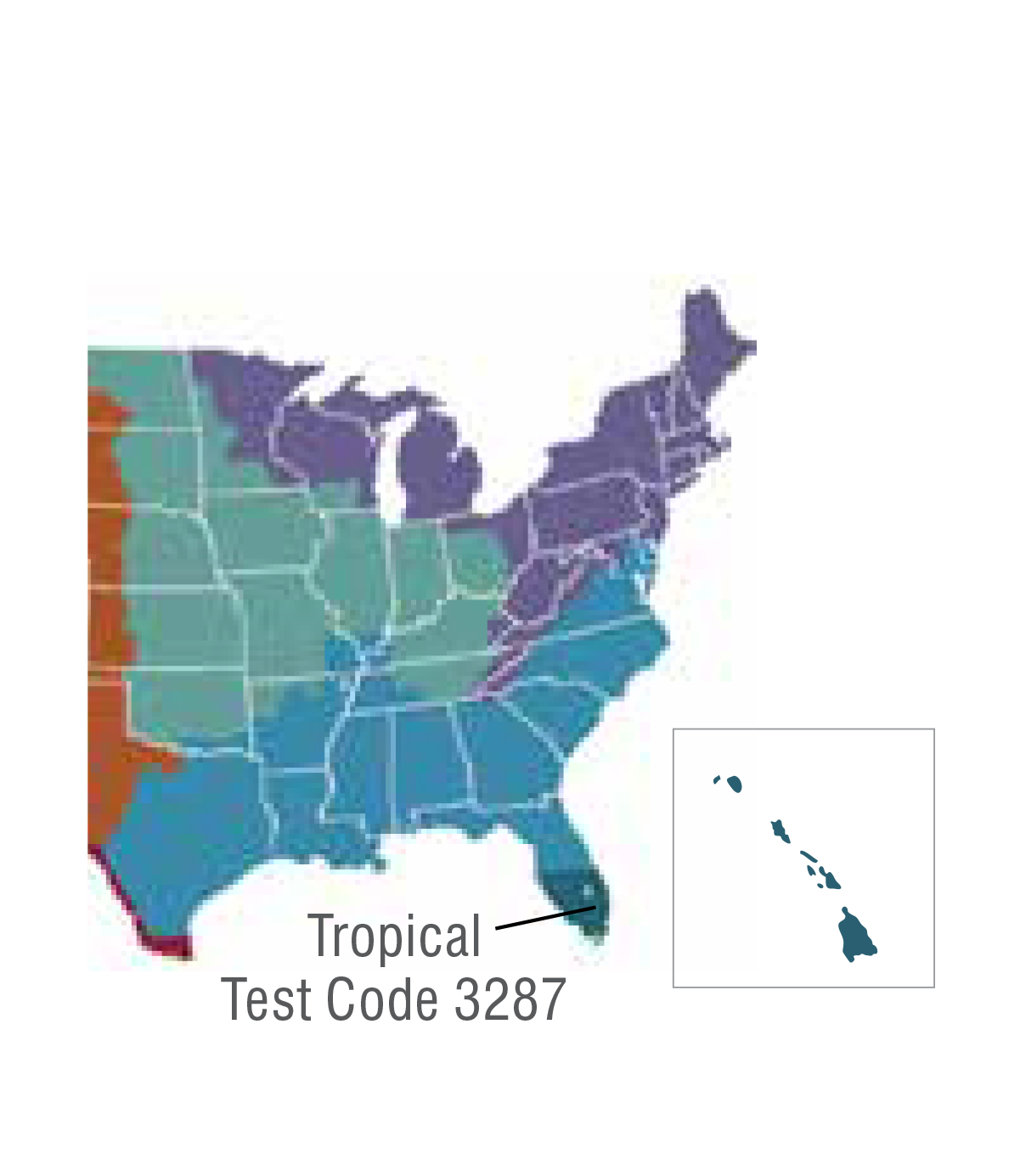
|
Regional Allergen
Panel |
Secondary Regional
Allergen Panel Add-on |
Regional with
Insect |
Regional with
Food |
Regional with
Food and Insect |
Regional with
Farm & Stable |
Regional with
Food, Insect, and Farm & Stable |
Regional with
Farm & Stable and Insect |
Equine Comprehensive
Regional |
|---|---|---|---|---|---|---|---|---|---|
| Test code | 3287 | 32871 | 32872 | 32873 | 32874 | 32875 | 32876 | 32877 | 3305 |
| Serum required* | 2 mL | 1 mL | 3 mL | 3 mL | 4 mL | 3 mL | 5 mL | 4 mL | 5 mL |
| Tropical environmental allergens | |||||||||
| 36 Common allergens | • | • | • | • | • | • | • | • | |
| 12 Region-specific allergens | • | • | • | • | • | • | • | • | • |
| Additional allergens | |||||||||
| Farm & Stable Panel | • | • | • | • | |||||
| Food Panel | • | • | • | ||||||
| Insect Panel | • | • | • | • | • | ||||
For most atopic patients, ordering the Regional Allergen Panel is indicated. This panel tests for IgE against 36 core environmental allergens common to all regions and 12 additional allergens specific to your region. These 48 allergens include pollens (from weeds, trees, and grasses), molds, and mites (including storage mites often found in pet food). If the patient lives near the border of a region, an Add-on Secondary Regional Allergen Panel from the neighboring region may also be indicated.
Additional panels that are less commonly indicated, but can be ordered in combination with the Regional Allergen Panel, include the Farm & Stable Panel (for common farm allergens, such as alfalfa, oats, etc.), Food Panel, and Insect Panel (for common household and biting insects).
*Submission of a Pet History Form is recommended. Download form here or call Laboratory Customer Support at 1-888-433-9987.
Tropical environment allergens
(36 common plus 12 region-specific allergens)
Molds
Alternaria
Aspergillus
Cephalosporium
Cladosporium
Curvularia/Drecshlera
Mucor mix
Penicillium
Pullularia/Aureobasidium
Stemphylium
Grasses
Bahia grass
Bermuda grass
Johnsongrass
Kentucky bluegrass/June grass
Meadow fescue
Perennial ryegrass
Quack grass
Redtop
Timothy
Insect
Flea
Mites
Blomia tropicalis
Dust mite (Dermatophagoides pteronyssinus)
Dust mite (D. farinae)
Storage mite (Acarus siro)
Storage mite (Tyrophagus)
Trees
Acacia
Ash mix
Australian pine
Bald cypress
Bayberry/wax myrtle
Cedar, red (juniper)
Mango
Maple mix
Melaleua
Mulberry, red
Oak mix
Orange
Palm
Peppertree
Pine mix
Weeds
Cocklebur
Dandelion
Dock/sorrel mix
Dog fennel
English plantain
Goldenrod
Lamb’s-quarter
Pigweed mix
Ragweed mix
Note: Region-specific allergens are noted in bold font.
Additional allergens
Farm & Stable Panel
Animal
- Cat dander
Grains
- Grain dusts
- Grain smuts
Molds
- Candida albicans
- Rhodotorula mucilaginosa
Pollens
- Alfalfa
- Bromegrass
- Corn
- Cultivated oats
- Cultivated rye
- Orchard grass
- Red clover
Food Panel
- Barley
- Beef
- Beet pulp
- Brewer’s yeast
- Chicken
- Corn
- Duck
- Eggs (chicken)
- Ground flaxseed
- Kangaroo
- Lamb
- Liver (beef)
- Milk (cow)
- Oats
- Pinto beans
- Pork
- Potato (white)
- Rabbit
- Rice
- Soybean
- Turkey
- Venison
- Wheat
- Whitefish (cod, flounder, halibut, mackerel, tuna)
Insect Panel
- American cockroach
- Black ant
- Caddisfly
- Culicoides
- Deerfly
- Fire ant
- German cockroach
- Horsefly
- Housefly
- Lepidoglyphus destructor (storage mite)
- Mayfly
- Mosquito
Immunotherapy Resources
Canine / Feline Specific
Sublingual (SLIT) Initial & Refill Dosing Schedule
Subcutaneous (SCIT) Initial Dosing Schedule (Allergy Guidebook)
Subcutaneous (SCIT) Refill Dosing Schedule
Support
Forms and other resources
Access IDEXX Reference Laboratories specimen guidelines, forms, articles, and more.
Directory of Tests and Services
Browse the online Directory of Tests and Services to see a comprehensive list of offerings from IDEXX Reference Laboratories.
Learn more about a specific product or service.
A representative will help you every step of the way.
IDEXX Reference Laboratories
DISCOVER MORE
